#Yahiko Shrine
Text
"You can almost forget yourself. And all your troubles and your past, and all the way life seems to leave you wrecked. They all just disappear." - John Blackthorne, Shogun (Ep 4)
Video of Yahiko Shrine by Photography in Japan
#yahiko shrine#shinto shrine#japan#snow in japan#winter in japan#rural japan#japan countryside#demon slayer#shogun
91 notes
·
View notes
Text
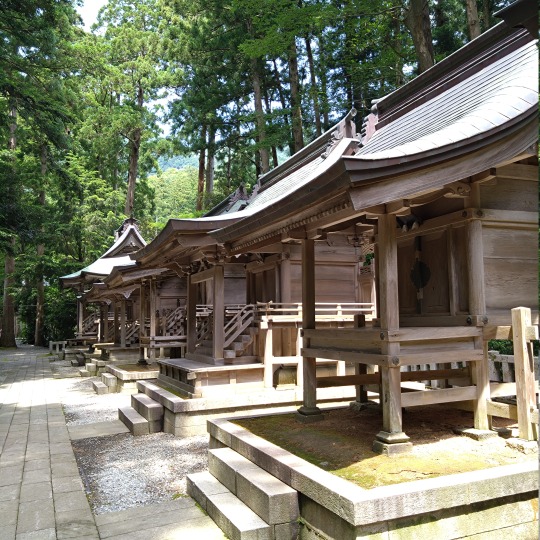
Yahiko Shrine, Yahiko, Niigata, 9
28 notes
·
View notes
Text
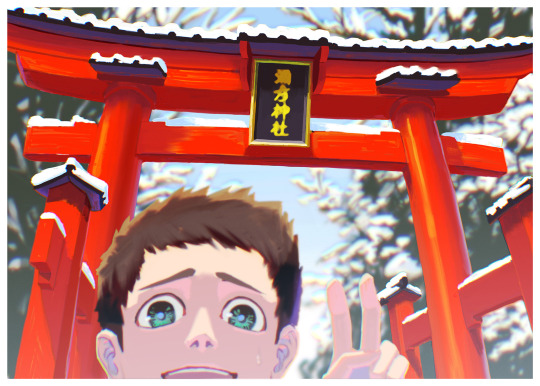
▼Yahiko Shrine, Niigata, Japan
(Tokimitsu is from Niigata and Yahiko Shrine is one of the most popular tourist spots in Niigata! )
Yahiko Shrine information↓
https://enjoyniigata.com/en/spot/7476
98 notes
·
View notes
Text



8 notes
·
View notes
Text



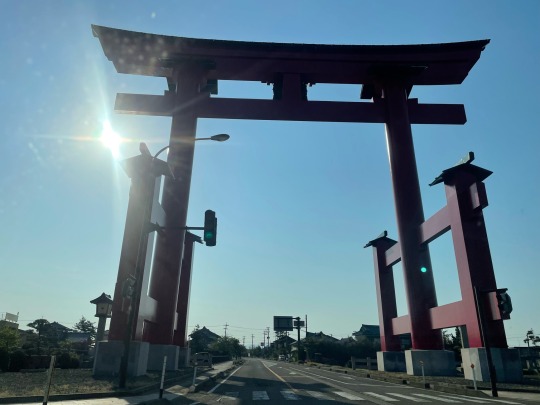
弥彦神社
新潟県弥彦村
大鳥居は何回も目にしてたけど、お参りは初めまして。
神秘的で素敵でした。
やはり神社は朝にお参りするのが1番綺麗かもしれない。
8 notes
·
View notes
Photo

弥彦神社へ初詣。 家族みんなが健康で暮らせますように。 ヨガもクリスタルボウルも、丁寧に練習して少しでも前に進めますように。 と、お願いしてきました。 #初詣 #お正月 #冬 #弥彦神社 #弥彦村 #新潟 #shrine #newyear #winter #japan #niigata #yahiko (弥彦神社) https://www.instagram.com/p/Cm5fkEfPVS6/?igshid=NGJjMDIxMWI=
5 notes
·
View notes
Text
reading up about bakeneko, and the link to the wikipedia page about myōtaratennyo (deity based off of a tale about a bakeneko possessing an old woman and eventually coming to be called yasaburo-baba) and the link was red. was very confused that apparently the myōtaraten was transphobic until I realized that the wikipedia page just did not exist.
#ceilingtalks#also myōtaratennyo isn't the kami enshrined in yahiko shrine#that's ame-no-kaguyama-no-mikoto. myōtaratennyo is in the thousand-year-old cedar tree in houkouin temple a bit north of yahiko shrine#tale is that she hung herself on it and reformed into the goddess of marriage and guardian of children under the tree
1 note
·
View note
Text
新潟 TRIP 202403 - その壱:彌彦神社
先月末の3月25日(月)~26日(火)にかけて、初めての新潟県へと出掛けてきました。
そもそも日本海側で訪れたことがあるのは京都府と福井県だけでもあったので��結構貴重なことでした。 今回は急遽の必要に終われた形で、特段の予定があったわけではないのですが、されど行かざるを得ないというか、行くことが確定していた話。 さりとて、初の新潟にウキウキしないわけはなく、意気揚々と『新潟 TRIP…

View On WordPress
0 notes
Text
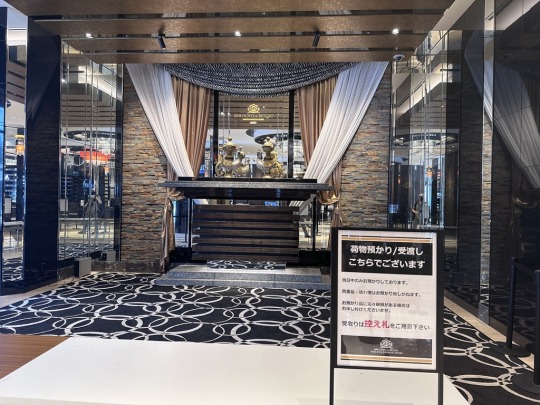
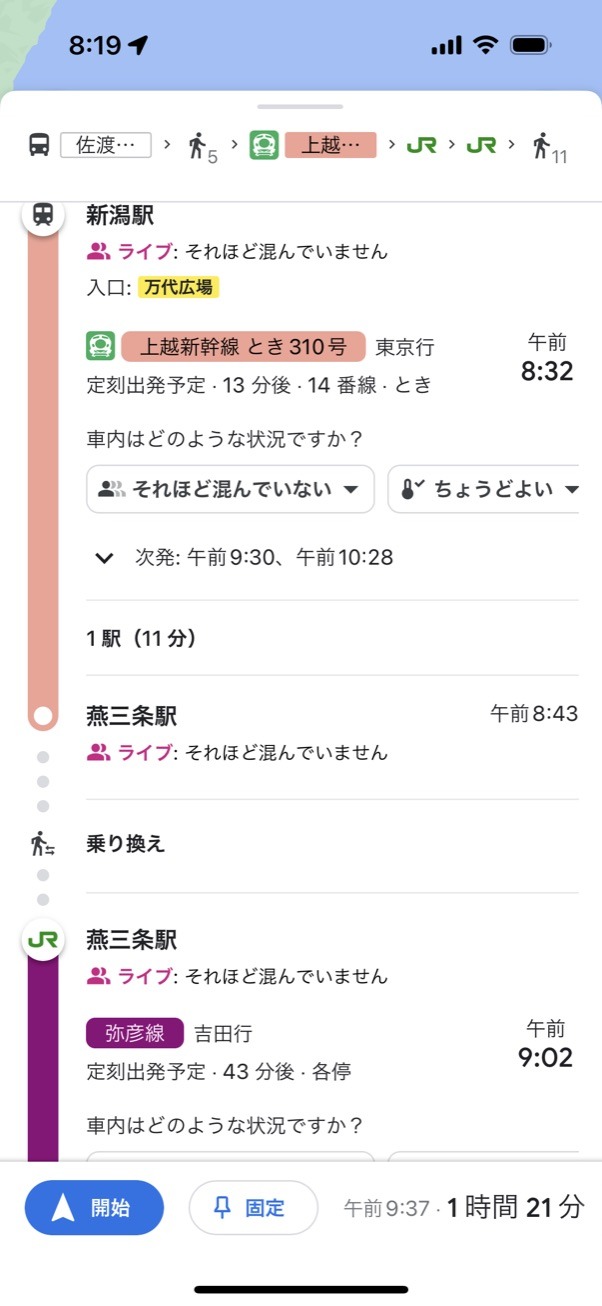



アパホテルでチェックアウトして、荷物を預かってもらう。新潟。
弥彦神社に行こうとして、1時間に1本の電車のホームを間違えて乗れずに引き返す。あきらかに弥彦神社に行くと思い込んで同じホームで待ってたら、違うホームに階段で行かないといけなかった。燕三条駅から直接弥彦に行ってくれるのもあった(燕三条の時刻表より)。弥彦線かなり本数少ない。
1時間待てば、10:24-10:32で行けた。弥彦山の軽い山登りも計画していたが、吉田駅の時点でWIFIが充電切れ(夜に充電されてなかった)だった事もあり、その代わりに白山神社、新発田城に行けた。
新潟8:32‐8:43燕三条(特急とき)。
燕三条9:02‐9:15吉田(弥彦線)。
吉田9:18‐9:26弥彦(弥彦線)。ホームを間違え乗れず。引き返す。
Niigata8:32-8:43Tubame Sanjo (Rapid line Toki).
Tubame Sanjo 9:02-9:15Yoshida.(yahiko line).
Yoshida9:18-9:26Yahiko (yahiko line). failed.
0 notes
Text

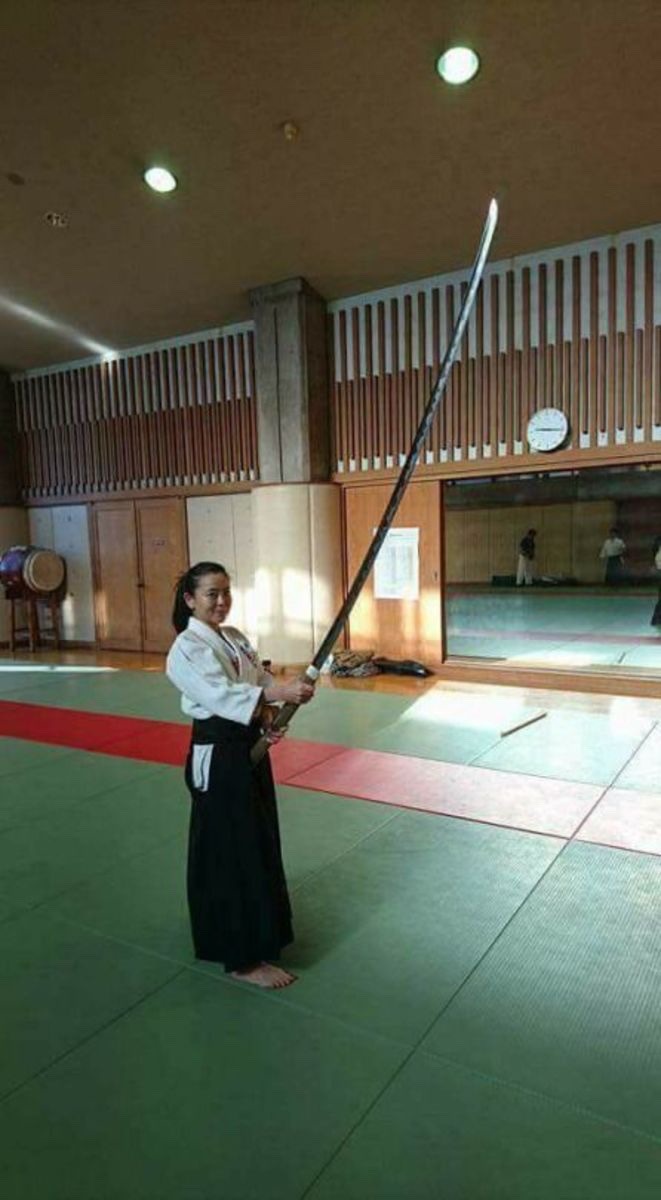
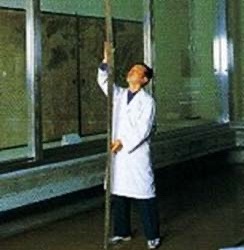
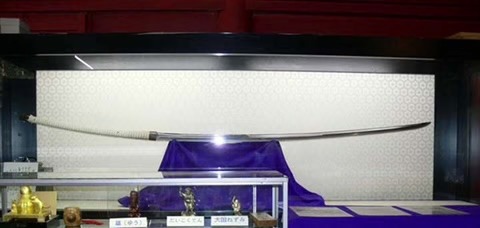
The Norimitsu Odachi (15th century) is a huge sword from Japan. It is so large that according to legend it was said to have been wielded by a giant. Measures in at 3.77 meters and 14.5kg.
Sword Lore
Admittedly, the reason why my friends are into swordsmanship is because of the sword itself. They just want to handle swords, that's all. They don't care about winning competitions or fights; for them, the swords in their hand brings an inexplicable pleasure. There is a sort of romance surrounding these weapons that others don't have. Most, that is. I say this because I've heard that polearms also have their place in other cultures and that the dagger has become symbolic in modern militaries.
It's a matter of preferences, and the cultures that preferred the sword have a collection of stories and legends attached to the weapon. What the samurai, medieval knights, and other warrior societies have in common is their blade lore. The sword is an important piece in their arsenal even though there are more superior tools in their inventory (like polearms ad firearms).
And going back to the samurai, some of the legends surrounding their weapons persist up to this day. Their blade lore is kept alive by the constant stream of films and anime to the point where everything is exaggerated. And one sword in Japan seems to take the word exaggeration to new lengths. Kept in a shrine somewhere in Okayama is a monstrous Japanese sword that stirred the imaginations of first-time observers.
Some Japanese swords required two hands to wield, but the sword of the Yahiko jinja shrine would require superhuman strength. The sword has a name, Norimitsu Odachi, named after its maker Norimitsu Osafune. The weapon dates back to the Muromachi period and was forged in August 1446 in the province of Bishū. And at a length of 3.77 meters, it will dwarf any sword in its class, even some western swords.
Not only that it is huge, but it is also heavy. Forged from a single piece of steel, the weapon weighs 14.5 kilos, far heavier than modern rifles, and obviously quite a lot for even trained warriors. The fact that it dwarfed average humans tickled the imaginations of people who admired its monumental scale.
Obviously, even highly trained samurai won’t carry such a monster on the battlefield. They would develop shoulder pain before they could even chop down their enemies. And any object weighing more than 10 kilos will tire the poor wielder. Because of this, people began to wonder why such a large odachi was forged and who would use such a contraption.
A large weapon requires great strength. And great strength correlates to great size. And only creatures with great size and strength could swing such a weapon. Hence the Norimitsu Odachi was intended for giants, at least as some people say.
The presence of a large weapon is evidence enough for some to believe in a race of gigantic beings. Japanese mythology often features gigantic creatures, like the local version of the western ogre Oni. Could it be that such legends were inspired by real life? Perhaps people of Japan back in the olden times really were aware of the existence of gigantic beings, and the giant sword was intended for their use.
But, there was a problem with this theory.
Firstly, the notion that the Norimitsu Odachi once belonged to a giant was recent and not an ancient legend. We could say that the restless users of the internet gave birth to such an idea. And the truth behind the massive, bladed weapon is quite underwhelming.
The Norimitsu Odachi belongs to a class of Japanese swords known as the odachi (obviously). Most westerners often associate the samurai with the katana, but throughout history, the samurai wielded several sword variants. Preceding the katana is a type of sword known as a tachi, whereas a blade longer than the tachi—the odachi—was widely used back in the Nanboku-cho period.
In Japan, ō (大) means great, while dachi is another variation of the word tachi, meaning sword. Hence, we have the odachi, the great sword. Indeed, the sword could reach 70 inches, as in the case of Uesugi Kenshin's men, while the Rikishizei troops of the Asakura clan carried 60-inch odachi.
One might wonder what the idea behind the extra-long swords was. According to some historical texts, the odachi was the weapon of foot soldiers and was more of a battlefield weapon. The great length of the sword gave the soldiers the reach advantage of a polearm, so the sword could be used as an anti-cavalry weapon as well. The preferred technique was the downward cut.
The odachi was also used to show off an army's strength, both as a morale booster for the user and as a form of intimidation. But carrying such a large weapon presented unique challenges. Unlike the tachi or the katana, the odachi was either hand-carried or slung across the back. In most cases, a retainer was needed for the samurai to draw such a sword quickly.
Nevertheless, the tactics shifted to spear-wielding troops and firearms. Plus, a large, heavy sword proved disadvantageous in situations that favored speed or mountain battles. Eventually, the odachi fell out of favor, but an impressive blade makes for a good temple offering. Hence in the Edo period, the odachi took on a ceremonial role in the temple. And since the odachi was not an easy sword to make, the manufacture of such a weapon was a statement of the maker's skills.
The maker Norimitsu Osafune simply wanted to make a statement. He wanted to show off how good he was by crafting such an object. Forging a Japanese sword was no easy feat and took years to master. And forging an even bigger sword was harder.
For one thing, a normal-sized sword already required complex forging techniques, and an extra blade length meant added complications. Simply, more work and hammering for the blacksmith. The longer metal was also harder to heat into homogenous temperature.
Then, there was the quenching. In a normal-sized sword, one will dip the blazing blade into a pool of water. An odachi needed a larger quenching medium, and who knows what size Norimitsu Osafune used for his monster sword?
Lastly is the sharpening and polishing. Obviously, one can’t apply the normal polishing method (rubbing the blade over a stone) to such an object. An odachi was hung or placed in a fixed position during polishing as the artisan did their work.
And it seems the physical labor paid off, as Norimitsu Osafune gained lasting recognition for his sword. And whoever commissioned the work must be really wealthy, for forging such a large object was expensive.
References
1. Kazuhiko Inada (2020), Encyclopedia of the Japanese Swords
2. Mol, Serge (2003). Classical Weaponry of Japan: Special Weapons and Tactics of the Martial Arts. Kodansha International.
3.Norimitsu Odachi: The Mysterious Giant Sword of Okayama (08 February 2020) Retrieved from Norimitsu Odachi: The Mysterious Giant Sword of Okayama - Nspirement.
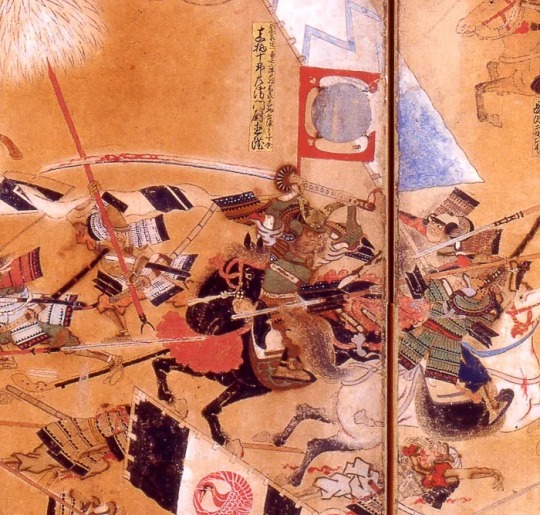
35 notes
·
View notes
Text
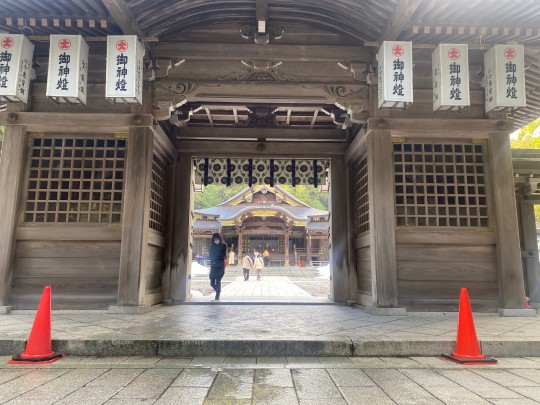


It is Yahiko Shrine in Izumo Town, Mishima District, Niigata Prefecture.
At Yahiko Shrine, which is affectionately called Oyahiko-sama, the god of lightning protection is enshrined.
It is said to be especially beneficial for marriage.
新潟県三島郡出雲町の弥彦神社です。
おやひこさまと呼ばれ親しまれる弥彦神社では雷除けの神様が祀られています。
特に縁結びにご利益があると言われています。
#tokyo#japan vacation#japan photos#tokyo tour#japan trip#landscape#japan travel#japanese#nature#japan
8 notes
·
View notes
Text


Propaganda
Gaara & Kankuro
They’re the best brothers
Went from willing to kill each other to willing to kill for each other
Konan & Negato
Besties since Konan saved his life
Wanted to protect each other
Negato rooted for her and Yahiko when they started getting into romance
Konan reassured Negato that they’ll help him control his powers
Stayed together after Yahiko’s passing
Still protecting each other
Undying loyalty to each other
Working for the betterment of Ame
Best combo attack in the game
Konan built a shrine to him and Yahiko when he died
Konan fought wi her life to protect his eyes from falling into ‘Madara’s’ hands
28 notes
·
View notes
Text
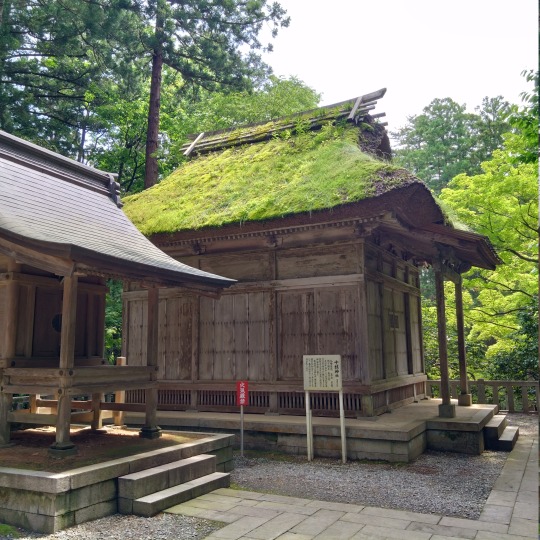
Yahiko Shrine, Yahiko, Niigata, 8
5 notes
·
View notes
Text
4 Niigata Hanami Spots To See Cherry Blossoms
There’s nothing more synonymous with spring in Japan than sakura, and the cherry blossoms you can see at Niigata hanami are no exception. Niigata is a long prefecture, so the cherry blossoms in different areas can bloom at very different times, starting from the south in Joetsu and working up to Niigata City. Unfortunately, it can be hard to determine exactly when the cherry blossoms in different areas will bloom, which is why this post was postponed since they’re blooming later than originally expected this year. However, when they do start to bloom, it’s a wondrous sight to see.
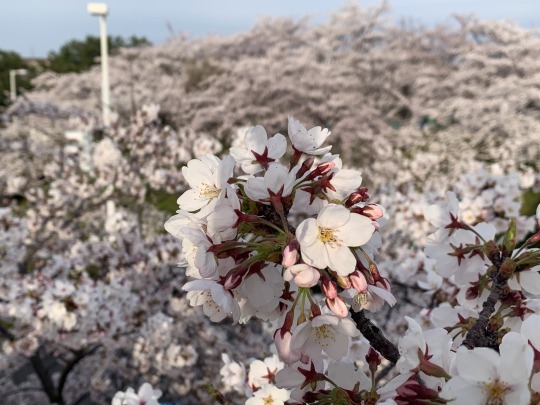
Takada Castle Site Park
Takada Castle Site Park in Joetsu is by far one of the most popular Niigata hanami spots. The park is lined with cherry blossom trees that are some of the first to bloom since it’s in one of the furthest south cities in Niigata Prefecture. In addition to beautiful views of the castle and its fountain through the cherry blossoms, there is also an abundance of food stands throughout the park. They sell all of the typical staples–karaage, yakisoba, takoyaki, candied fruits–as well as many other interesting treats. And if you can stick around until nighttime, they light up the whole park with lanterns. Even the castle is lit up and, in photos, almost looks like it’s glowing green from the light shining off the grass. This year, only some of the cherry blossoms had bloomed by the weekend we visited, but it was still very pretty.
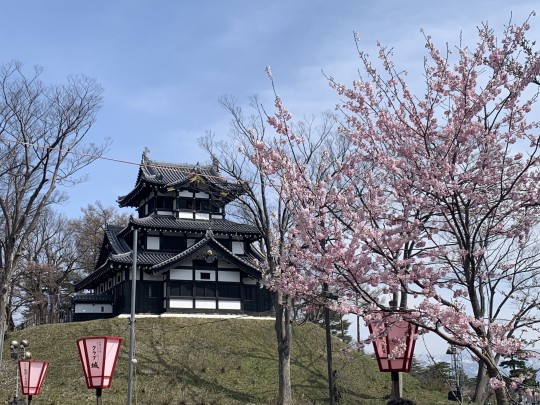


Hakusan Park
If you live closer to the north of Niigata Prefecture and it’s too hard to get down to Joetsu, you can also visit Hakusan Park in Niigata City. Next to Hakusan Shrine, Hakusan Park has an entire grove of cherry blossom trees that bloom in the spring. You can set up a blanket under the many flowering trees, look out over the reflective pool, and eat food from nearby stands that are set up for most of the spring season. It’s not as big as Takada Castle Site Park, but there’s still a fair bit of space and a lot of food options. There were even some performances during the weekend when the cherry blossoms were in full bloom.

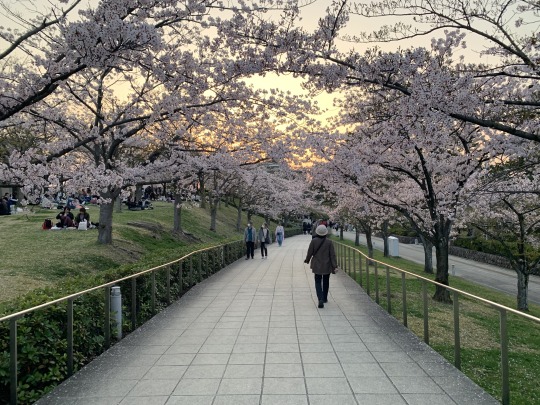
Yasuragitei (Shinano Riverside)
Another option for Niigata hanami in the city is Yasuragitei. Yasuragitei runs along the Shinano riverbank and is lined with cherry blossoms and flowers in the spring. Local students plant tulips along the riverbanks in the fall, and the colorful buds bloom in the spring with the cherry blossoms. It’s a beautiful place for a walk, or you can bring a blanket and find a spot to sit. However, you will have to bring your own food because there aren't any food stands by Yasuragitei, though you can go back again in the summer when the riverside restaurants open up.
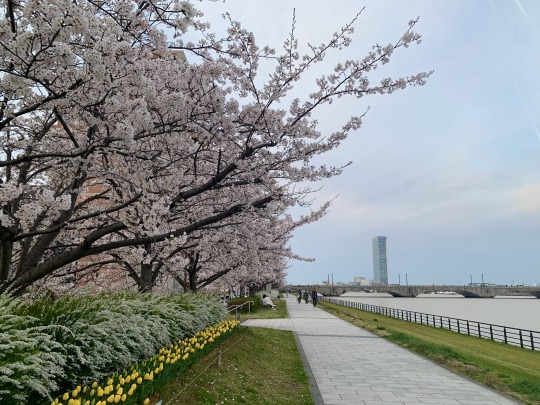
Yahiko Park
If you’re looking for a place closer to Niigata City that still has lots of space, beautiful nature, and a wide variety of food stands, you can also check out Yahiko Park. Generally, Yahiko Park is geared toward fall foliage, so there aren’t too many cherry blossoms around its iconic red bridge. However, most paths are lined with cherry blossom trees, including the main opening to the park just before the Yahiko Park tunnel. Plus, on top of the permanent restaurants, many food trucks and stands set up in the parking lots and along the streets. While there aren’t many cherry blossoms at the top of Yahiko Mountain, you can still see the beautiful view of the town while you’re there and stop by Yahiko Shrine on the way up.
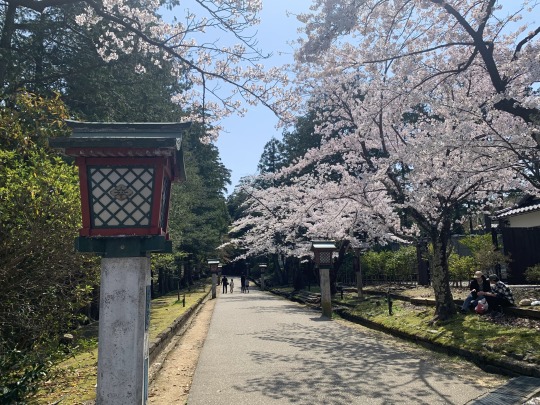

There are many other beautiful Niigata hanami spots, especially in the rural areas of Niigata, but these are four popular places to go and the ones I’ve had the chance to visit. Of course, anywhere with a few cherry blossom trees and a place to sit can be a great hanami spot. It’s all about the people you're with and the appreciation for the short-lived pink blossoms. So, whatever site you choose for your Niigata hanami will be perfect!
#cherry blossom#sakura#hanami#takada castle site park#hakusan park#yasuragitei#yahiko park#japan#niigata#ourniigata#edgeofniigata#enjoyniigata
2 notes
·
View notes
Text
In a verse where Nagato is the sole survivor of the Ame trio (resurrected and stays while Konan lays with Yahiko in her paper shrine), Nagato would have felt as if his most vital of organs were severed from him.
He's learned to live without Yahiko, having distanced the spirit from the body. Konan, however, was such an integral part of his well-being and livelihood that (romantically, platonically, familial, however you wish to read it) being without her is essentially living with only half himself.
#.ooc#|| He has no qualms being alone but he was the body and she was the blood ykwim#|| No real definition of relationship here.#|| It's more apt to say that Nagato viewed all the paths of pain as his bodies and Konan as his spirit.#|| Her importance is immeasurable to him like she's an integral part of /his/ whole.#|| So without her it's a hollow vacancy left in the center of his chest.#|| Best allegory I have is blood pact but instead of cutting the palm you cut off the skin and connect at the veins.#.mobile#.hc
2 notes
·
View notes
Text
Headcanon #2- After Nagato died, Konan visited the shrine where Yahiko and Nagato’s bodies were every day. She would do any cleaning, swap out old, dusty paper flowers for fresh ones, and speak to them (not in a delusional way, she knew they were dead.) Sort if like Kakashi visiting the Konoha cemetery every day.
She wondered if Yahiko would forgive her and Nagato for what they had done after his death. However, she resolved to stop “Madara,” reform the Hidden Rain, and build alliances with other nations.
I like to imagine that in an alternate universe where she survived, she would fulfill her promise to reform the Hidden Rain, and while she would struggle to get others outside of Ame to trust her, she would eventually become a respected leader.
I had worked a little on a fic based on the shrine headcanon, but I wasn’t sure if I was making it too monologue-ish and boring. I may revisit it later.
Edited the post to clarify what the fic was about.
4 notes
·
View notes